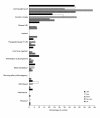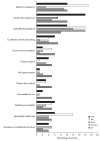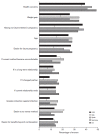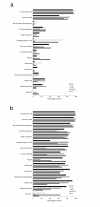Current methods and attitudes of women towards contraception in Europe and America
- PMID: 23384291
- PMCID: PMC3599328
- DOI: 10.1186/1742-4755-10-7
Current methods and attitudes of women towards contraception in Europe and America
Abstract
Background: The choice of available contraceptive methods has increased in recent years; however, recent data on women's awareness of methods and reasons for their method choice, or reasons for changing methods, is limited. The aim of this study was to examine the use and awareness of contraceptive methods in the USA, UK, Germany, Italy and Spain.
Methods: Quantitative survey of heterosexual women aged 25-44 years (n=2544), with no known infertility. Questions related to knowledge and use of contraceptive methods, reasons for choice and for changing methods, and sources of advice.
Results: There was generally good awareness of most forms of contraception in all five countries. Awareness and current usage was greatest for the contraceptive pill (awareness >98%, usage varied from 35% [Spain] to 63% [Germany]); and male condom (awareness >95%, usage varied from 20% [Germany] to 47% [Spain]); awareness of other methods varied between countries. Doctors have the greatest influence on women's choice of contraceptive method (>50% for all countries), and are most likely to suggest the contraceptive pill or male condom.Women's contraceptive needs change; 4-36% of contraceptive pill users were likely to change their method within 12 months. For previous contraceptive pill users (n=377), most common reason for change was concern about side effects (from 26% [Italy] to 10% [UK]); however, awareness of many non-hormonal contraceptive methods was low.
Conclusions: Women aged 25-44 are aware of a wide variety of contraceptive methods, but knowledge and usage of the contraceptive pill and condoms predominates. Changing contraception method is frequent, occurring for a variety of reasons, including change in life circumstances and, for pill users, concerns about side effects.
Figures




References
Publication types
MeSH terms
LinkOut - more resources
Full Text Sources
Other Literature Sources
Medical

